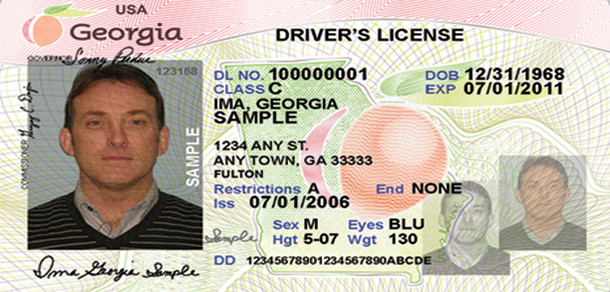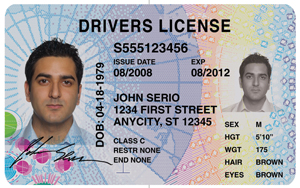Driver license security improving, but holdout states risk resident’s ability to fly
19 October, 2015
category: Biometrics, Government
A decade has passed since REAL ID was signed into law. The controversial driver license legislation was met with staunch opposition from many states, some going so far as to legislate against compliance. For the most part, however, the opposition has subsided and there has been significant improvement to both issuance processes and document security.
The U.S. Department of Homeland Security estimated that 70% to 80% of all U.S. drivers hold licenses from jurisdictions that have either met the law’s standards or have received extensions. Four states and one U.S. territory are non-compliant with the act and have not requested extensions. Another 27 states and territories have extensions that expire in October 2015. Homeland Security officials denied interview requests for this story.
Enforcement of REAL ID has already started in some places. As of this January, some federal facilities ceased accepting licenses from states that were not compliant and did not have an approved extension.
In January 2016, things get real from REAL ID. On that date, license holders from non-compliant states will need another form of acceptable identification in order to board a commercial airline. No license, no flight.
If a state is compliant, not all license holders will be required to have a new document for airline travel in 2016. Individuals will have until 2020 to obtain a compliant license.
Better security long-time coming
Many states were working to improve driver licenses long before REAL ID, says Ian Grossman, vice president of member services and public affairs at the American Association of Motor Vehicle Administrators. “A lot of these efforts began two decades ago,” he explains.
The significance of REAL ID is that it was a stake in the ground that said a driver license is more than a document that says you know how to drive
This was when license issuers realized the credential was used for much more than its intended purpose, says Jenny Openshaw, vice president of state and local sales at MorphoTrust, which supplies driver licenses to 42 states. “The significance of REAL ID is that it was a stake in the ground that said a driver license is more than a document that says you know how to drive,” she adds.
Even many states that passed laws saying they would not comply with REAL ID are making efforts. Arizona, for example, was vocal against the law but is in the process of creating compliant documents and processes for its citizens.
State-to-state verification still in the works
One of the more controversial parts of REAL ID was the state-to-state pointer system. This system would enable one state to check with others to make sure an individual wasn’t already licensed in that state as well.
Skeptics saw this as a framework to create a national ID system, and states bemoaned the difficulties inherent in creating such an infrastructure. Well, they may have been correct, as the network does not yet exist.
The American Association of Motor Vehicle Administrators, however, started a pilot this summer that will test such a system with 11 states, according to Ian Grossman, vice president of member services and public affairs at AAMVA.
The key drivers for the systems will be:
- Limit a person to one driver license or ID card
- Enable a state to determine if a person holds a license or identification card in another state
- Enable a state to send a request to another state to terminate a driver license
- Provide information on all state issued driver licenses nationwide
- Enable states to verify licenses and ID cards presented as a form of identification
REAL ID impacts every aspect of the driver license issuance process, not the least of which are the documents themselves. “States were all over the map when it came to securing documents against counterfeiting and forgery,” Openshaw says. REAL ID is changing that.
AAMVA created a minimum level of security features for the documents and almost every state has adopted those standards, Grossman says. “States are including more sophisticated security features in the physical card,” he explains. “Overt and covert security features make licenses and IDs more difficult to counterfeit.”
Major changes have been made to the process as well.
To start, applicants are having their photo taken first instead of last. This serves two purposes. It enables the headshot to be run through a facial recognition system to see if any other names match the face, and if someone is trying to obtain a license with false information a photo of that individual is now on record.
According to Openshaw, facial recognition technology has now been deployed by 33 states.
States are also asking for more documentation prior to issuance. Birth certificates and Social Security cards are a necessity to get a REAL ID-certified license. These documents are presented, scanned and verified for authenticity before an individual is allowed to go further.
All compliant states link to the Social Security Administration for real-time verification of presented numbers. Additionally, many states are using third-party services to validate breeder documents like birth certificates or biographic data like addresses from utility bills. “One of the biggest process changes is strengthening and authenticating the documents that people have to bring in to receive a license,” Openshaw says.
These added steps have added time to the issuance process, and some states are working to ease the wait time by enabling citizens to pre-enroll. By reviewing and presenting certain information beforehand, an individual can be pre-vetted when they show up, Openshaw explains. Florida and Mississippi currently offer this feature.




